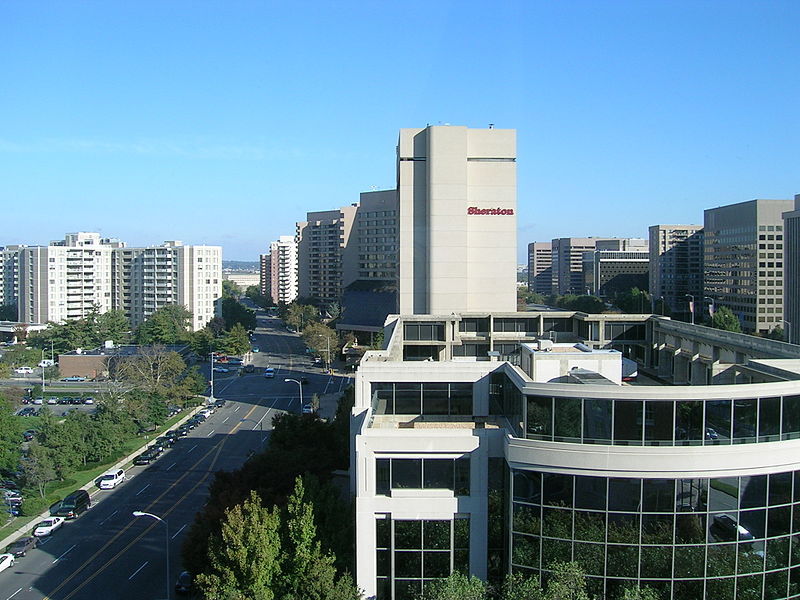After 11 months of hoping, praying, and more than a little begging, 18 finalist cities came away empty handed from the lottery for Amazon’s second headquarters, which promised the winner a Powerball of 50,000 high-paying jobs, $5 billion in direct investment, and an economic boon.
On Nov. 12, Amazon confirmed that it had chosen two locations—Long Island City in the New York borough of Queens, and the Crystal City neighborhood of Arlington, Va.—where it will split its hiring and investment plans for its second homes.
Amazon’s overhyped yet secretive selection process—starting with the announcement of its plans in September 2017, followed by a six-week pitch period that drew bids from 238 cities—produced a short list of metros whose elected officials and business leaders pleaded their cases and promised the moon: tax breaks, land grants, and infrastructure improvements in the billions of dollars. (Why this largesse should be bestowed on one company is a topic for another time.)
As it turned out, though, Amazon’s HQ2 picks may have been preordained. The two cities already had the greatest number of Amazon employees outside of Seattle, and they offer a robust talent pool. Arlington is also near Washington, D.C., where Amazon’s Chairman and CEO Jeff Bezos lords over the Washington Post.
See Also: Amazon selects HQ2 cities
If, in fact, the two winners were always the frontrunners, and this whole exercise was a charade (as some of the chagrined cities suspect), Amazon pulled off a masterful act of manipulation and mass hypnosis, convincing the other contenders they had a legit shot. Officials in places like Denver, Chicago, and Boston—which were among the “leaders” cited in media speculation—are probably still scratching their heads about why their cities were also-rans.
During its vetting process, the tech giant gained access to troves of financial and demographic data about the cities it was considering. I don’t think it’s too cynical to suggest that Amazon will eventually use this information for other business purposes.
What, exactly, will the two winning cities be getting for their efforts, aside from more mass transit congestion? Probably not equal to what Amazon’s 14-million-sf presence has meant to Seattle’s economy and growth.
The stage has been set for Round 2, where developers and AEC firms trip over each other trying to get a piece of whatever Amazon is planning to either build or renovate. (The New York Times reported that Amazon informed the winners that it wants 500,000 sf of office space available in 2019.)
But before any firms enter the fray, it’s worth remembering that Seattle-based NBBJ has designed a number of buildings for Amazon, including its Spheres glass domes in Seattle, for which Magnusson Klemencic Associates was the structural engineer.
Related Stories
| Aug 11, 2010
Burr Elementary School
In planning the Burr Elementary School in Fairfield, Conn., the school's building committee heeded the words of William Wordsworth: Come forth into the light of things, let nature be your teacher. They selected construction manager Turner Construction Company, New York, and the New York office of A/E firm Skidmore, Owings & Merrill to integrate nature on the heavily wooded 15.
| Aug 11, 2010
Bronze Award: Trenton Daylight/Twilight High School Trenton, N.J.
The story of the Trenton Daylight/Twilight High School is one of renewal and rebirth—both of the classic buildings that symbolize the city's past and the youth that represent its future. The $39 million, 101,000-sf urban infill project locates the high school—which serves recent dropouts and students who are at risk of dropping out—within three existing vacant buildings.
| Aug 11, 2010
New school designs don't go by the book
America needs more schools. Forty-five percent of the nation's elementary, middle, and high schools were built between 1950 and 1969, according market research firm ZweigWhite, Natick, Mass. Yet even as the stock of K-12 schools ages and declines, school enrollments continue to climb. The National Center for Education Statistics predicts that enrollment in public K-12 schools will keep rising...
| Aug 11, 2010
Bronze Award: Lincoln High School Tacoma, Wash.
Lincoln High School in Tacoma, Wash., was built in 1913 and spent nearly a century morphing into a patchwork of outdated and confusing additions. A few years ago, the Tacoma School District picked Lincoln High School, dubbed “Old Main,” to be the first high school in the district to be part of its newly launched Small Learning Communities program.
| Aug 11, 2010
Great Solutions: Technology
19. Hybrid Geothermal Technology The team at Stantec saved $800,000 in construction costs by embedding geothermal piping into the structural piles at the WestJet office complex in Calgary, Alb., rather than drilling boreholes adjacent to the building site, which is the standard approach. Regular geothermal installation would have required about 200 boreholes, each about four-inches in diameter ...
| Aug 11, 2010
Cronkite Communication School Speaks to Phoenix Redevelopment
The city of Phoenix has sprawling suburbs, but its outward expansion caused the downtown core to stagnate—a problem not uncommon to other major metropolitan areas. Reviving the city became a hotbed issue for Mayor Phil Gordon, who envisioned a vibrant downtown that offered opportunities for living, working, learning, and playing.
| Aug 11, 2010
Bronze Award: Hawthorne Elementary School, Elmhurst, Ill.
At 121 years, Hawthorne School is the oldest elementary school building in the Elmhurst, Ill., school district and a source of pride for the community. Unfortunately, decades of modifications and short-sighted planning had rendered it dysfunctional in terms of modern educational delivery. At the same time, increasing enrollment was leading to overcrowding, with the result that the library, for ...
| Aug 11, 2010
Platinum Award: Reviving Oakland's Uptown Showstopper
The story of the Fox Oakland Theater is like that of so many movie palaces of the early 20th century. Built in 1928 based on a Middle Eastern-influenced design by architect Charles Peter Weeks and engineer William Peyton Day, the 3,400-seat cinema flourished until the mid-1960s, when the trend toward smaller multiplex theaters took its toll on the Fox Oakland.







